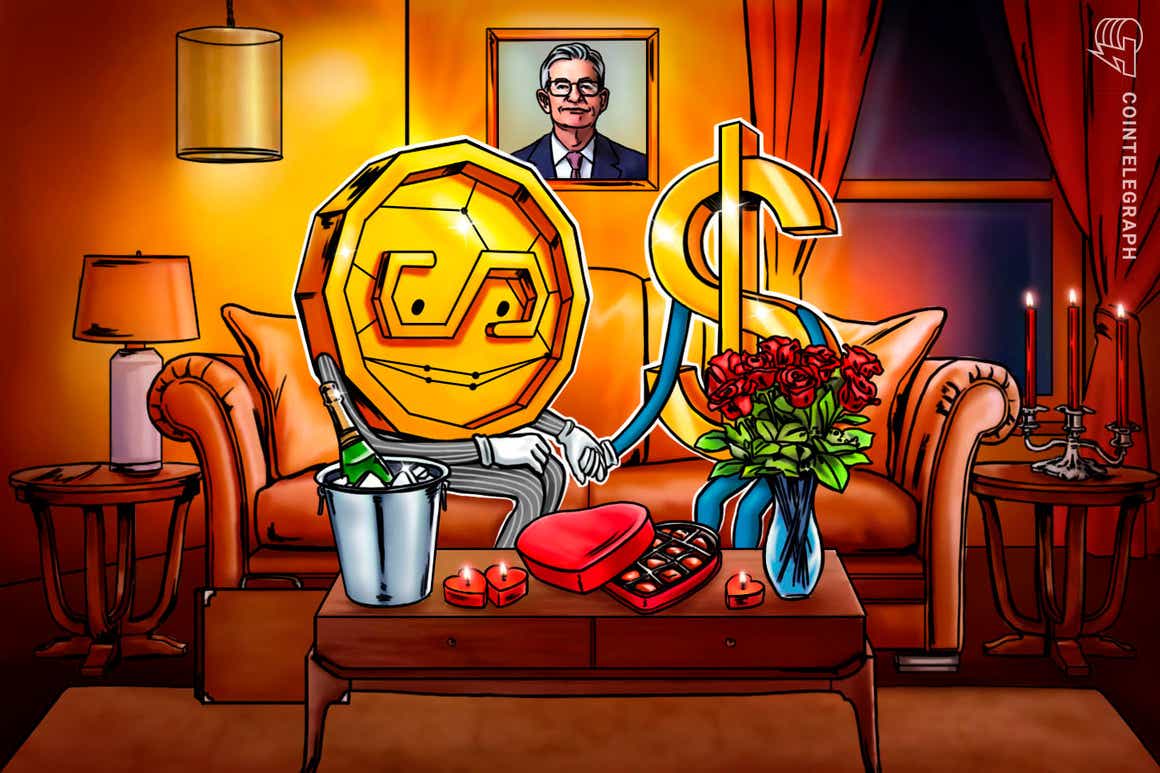During Jerome Powell’s Jan. 11 United States Senate confirmation hearings, Sen. Patrick Toomey posed a question to the incumbent-and-future Federal Re

During Jerome Powell’s Jan. 11 United States Senate confirmation hearings, Sen. Patrick Toomey posed a question to the incumbent-and-future Federal Reserve chief: “If Congress were to authorize and the Fed were to pursue a central bank digital dollar, is there anything about that that ought to preclude a well-regulated privately-issued stablecoin from co-existing with a central bank digital dollar?”
“No. Not at all,” the central banker answered — a response that surely brought some relief to the crypto community. At least the Fed wasn’t seeking to ban stablecoins. That bullet had apparently been dodged.
But, Toomey raised a significant and abiding question: Can stablecoins and a Federal Reserve digital dollar really coexist? If individual Americans were to have retail accounts with the Federal Reserve — as Toomey posited in what may have been an exaggerated scenario — “and the Fed becomes the retail banker to America,” why does one even need stablecoins? Or traditional retail banks for that matter?
Indeed, in a discussion paper released on Jan 20, the Fed cited various potential risks associated with a digital dollar, including that a CBDC could effectively replace commercial bank money. That paper was aimed at eliciting public comment, while elsewhere the Fed has indicated no interest in rushing out a digital currency despite the efforts of other countries like China.
Not all assumed the two could co-exist. “A widely and easily accessible digital dollar would undercut the case for privately issued stablecoins,” Eswar Prasad, professor of economics at Cornell University and author of the book, The Future of Money, told Cointelegraph, though “stablecoins issued by major corporations could still have traction, particularly within those corporations’ own commercial or financial ecosystems.”
Others envisioned separate and distinct use cases for stablecoin and central bank digital currencies, or CBDCs, a group that would include a future U.S. digital dollar. “There are definitely some distinct use cases for each,” Darrell Duffie, Adams distinguished professor of management and professor of finance at Stanford University’s Graduate School of Business, told Cointelegraph. “For example, the Fed is unlikely to give CBDC accounts to a wide spectrum of foreign consumers,” and dollar-pegged stablecoins could be very useful for making cross-border payments and settlements — fulfilling a real business need, he suggested.
Distinct purposes?
Would there, indeed, be distinct uses for a digital dollar and privately issued stablecoins — or are stablecoins likely to be superseded by CBDCs all around the world eventually?
“Stablecoins are different from most CBDCs in their construct and purpose,” Matt Higginson, a McKinsey partner who leads the consulting firm’s global blockchain and digital assets initiatives, told Cointelegraph. CBDCs are usually intent on improving financial inclusion, reducing the cost of cash and, to some degree, tracking financial transactions (for Anti-Money Laundering purposes, for example). Stablecoins, by comparison, are dollar-pegged tokenized cash aimed at improving the speed and efficiency of payments. “Their premises are really quite different, so there is no reason they shouldn’t co-exist,” said Higginson.
A digital dollar isn’t really about technology or efficiency, Jonas Gross, chairman of the Digital Euro Association, told Cointelegraph. As with CBDCs generally, it “could be more efficient or stable for handling a high throughput of retail transactions, where DLT is not needed, or where people prefer the safety, soundness and interoperability of a central-bank backed currency.”
Stablecoins, in comparison, “focus on the technological aspects, allow efficient payments due to removing intermediaries and novel innovative business models,” Gross said. The two could find different constituencies and could presumably co-exist.
Some countries, too, might prefer to dollarize their economies with a USD stablecoin, Duffie added. “And, some might get dollarized against the wishes of their central banks.” Not all CBDCs need to be blockchain-based or based on digital ledger technology, either, as Duffie noted, further explaining:
“Suppose a CBDC is not based on DLT, and we want to take advantage of smart contracting or other DLT applications, whether wholesale or retail. Stablecoins could serve a useful role there.”
Even Prasad didn’t rule out the possibility of coexistence: “Stablecoins and central bank digital currencies could be seen as complementary payment mechanisms, even if they might step on each other’s toes in that function.”
A change of heart?
At his confirmation hearing, Powell appeared to be more kindly disposed toward cryptocurrencies than in July 2021 when he told lawmakers: “You wouldn’t need stablecoins; you wouldn’t need cryptocurrencies, if you had a digital U.S. currency,” using that as an argument in…
cointelegraph.com
